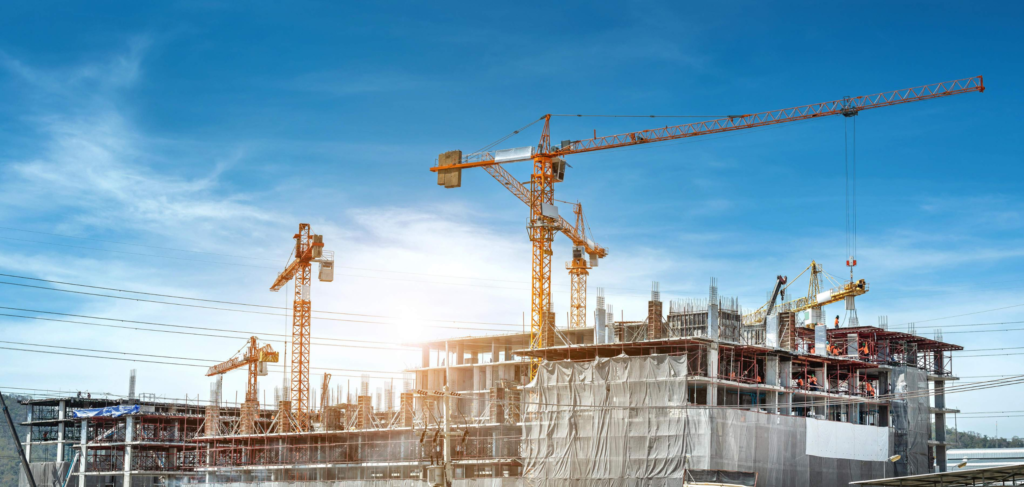
Looming Interest Rate Risk
The construction industry is highly sensitive to fluctuations in the federal interest rate, and any changes can significantly impact investor-required rates of return. As the fed increases rates, borrowing costs go up, which affects the feasibility and profitability of construction projects. Consequently, investors may demand higher returns to offset the increased risks associated with investing in the sector. Therefore, in a high rate environment, it is crucial for investors to adopt strategies that maximize returns while minimizing risks.
Effects of High Fed Rates on Investor-Required Rates of Return
One of the most significant implications of high rates on investor-required rates of return in the construction industry is increased borrowing costs. Higher rates lead to higher borrowing costs, which can reduce the profitability of construction projects. This may result in investors demanding a higher rate of return to compensate for the additional risks associated with investing in the sector.
Another implication is the increase in capitalization rates. A rise in rates can lead to an increase in capitalization rates, which is a key metric used to evaluate the profitability of real estate investments. As cap rates increase, property values may decline, further affecting investor returns.
Furthermore, as rates rise, the opportunity cost of investing in construction projects also increases, as investors may be able to secure higher returns from other investment opportunities, such as bonds or fixed-income securities. This can prompt investors to demand higher returns from construction projects to justify their investment.

Investment Strategies to Maximize Returns and Minimize Risks
Diversification
Diversification is a critical strategy that investors can utilize to manage the risk associated with investing in the construction sector. By diversifying their investment portfolio, investors can reduce their exposure to rate fluctuations and ensure a more stable return on investment.
Investors should aim to diversify their portfolio across various construction projects, asset classes, and geographic locations. This means that investors should not focus their investment on a single project or a particular geographic location. Instead, they should invest in multiple projects across different asset classes such as residential, commercial, and industrial properties.
Diversification helps in spreading the risks associated with investing in a single asset class or project. For example, if an investor invests in only one residential project, they may be exposed to risks such as changes in rates, regulatory changes, natural disasters, and changes in the housing market. However, if the investor diversifies their portfolio across multiple residential projects, commercial properties, and infrastructure projects, they can spread the risks and ensure a more stable return on investment.

Value Engineering and Managing Costs
In addition to considering the fundamentals of a construction project, investors should also pay close attention to construction costs. The higher fed rate can result in increased construction costs, as borrowing costs for developers go up. Therefore, investors should evaluate the construction cost estimates provided by developers and contractors carefully. It is essential to ensure that construction costs are realistic and align with the project’s scope and quality. By carefully evaluating construction costs and working with experienced developers and consultants, investors can ensure that their investments are profitable and can weather the challenges posed by a high-interest rate environment. Investors can also consider value engineering as a cost-saving measure when investing in construction projects.
Value engineering involves evaluating a project to identify areas where costs can be reduced without compromising the project’s quality or functionality. By implementing value engineering strategies, investors can lower construction costs, reduce project risks, and improve the overall return on investment. It is important to work closely with experienced consultants to identify and implement value engineering strategies effectively.
Seek Better Financing
When interest rates rise, finding construction loans at a lower cost of financing can be challenging.
It is important to shop around for lenders who offer competitive interest rates and loan terms:
- Research government-backed loan programs that offer lower rates, such as those offered by the Small Business Administration or the Department of Housing and Urban Development.
- Explore the option of securing a construction-to-permanent loan, which combines the construction loan and the mortgage into a single loan while negotiating with lenders to lower the interest rate or to waive certain fees associated with the loan.
- If possible, look for lenders who offer construction loans with interest-only payments during the construction phase, which can help reduce the monthly payment burden during this time.
Adopt a Long-term Perspective
Adopting a long-term investment horizon can help investors ride out short-term volatility caused by fluctuating rates. By focusing on long-term growth prospects, investors can capitalize on potential opportunities, even during periods of high-interest rates. Investors should have a clear understanding of their investment goals and time horizons before investing in new construction developments.
Protecting investor returns in a high-interest rate market can be challenging, but by adopting the right investment strategies, investors can maximize returns while minimizing development risks. Diversifying their portfolio, focusing on quality projects, opting for better financing, investing in defensive assets, and maintaining a long-term perspective can help investors navigate the challenges posed by a high interest rate.
Don’t let high rates impact your construction and development projects. Contact us today to learn more about our services and how we can help you manage construction and development risk. Our team of experts is ready to provide you with the guidance and support you need to succeed in a challenging market.
